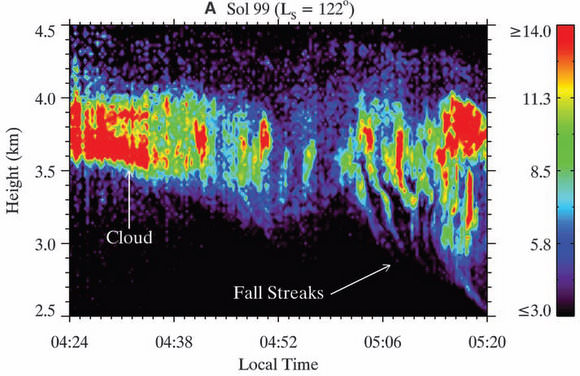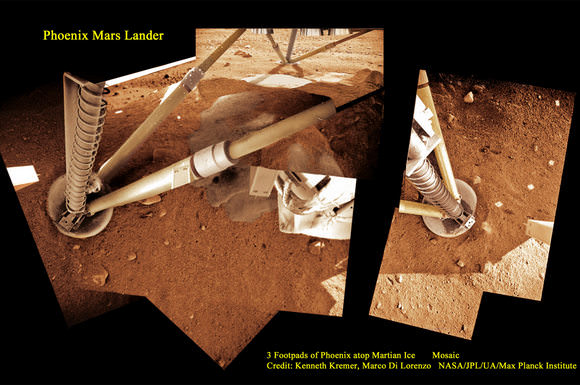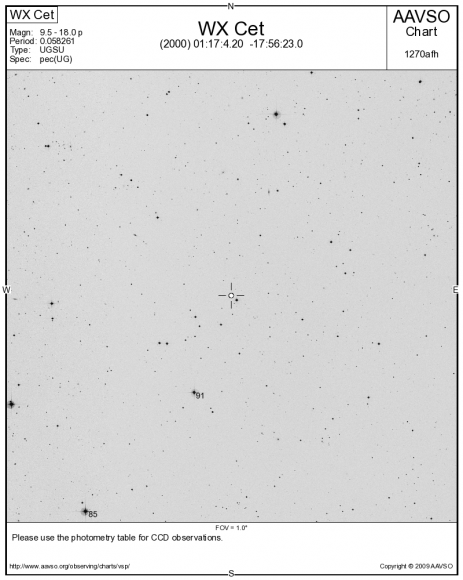Earliest Stars Came in Pairs, New Simulation Shows

Most stars exist in binary pairs today — and new research indicates that may have been true for a very long time. This simulation of a primordial star forming region about 200 million years after the Big Bang shows two pre-stellar cores of more than five times the mass of the sun each. The cores formed at a separation of 800 times the distance from the Earth to the Sun, and are expected to evolve into a binary star system.
Most previous simulations of the early universe, in which clouds of primordial gas collapsed to form the first luminous objects, suggest that early stars formed separately from each other.
(...)
Read the rest of Earliest Stars Came in Pairs, New Simulation Shows (142 words)
Beautiful Chaos
Can you imagine living in this region of space? Just think of the beautiful views you'd have in the sky – that is, if you survived the chaos as one galaxy is passing through the core of three other galaxies at ridiculous (ludicrous?) speeds (3.2 million km per hour / 2 million miles per hour) generating a shock wave of gas and X-rays.
(...)
Read the rest of Beautiful Chaos (256 words)
NASA Science News for July 10, 2009
When astronauts travel through space, the human heart loses something it seems to need: the Earthly pull of gravity. Is this a problem? NASA is launching a new study to find out.
FULL STORY at
http://science.nasa.gov/headlines/y2009/10jul_cardio.htm?list1035898
NASA Science News for July 9, 2009
Amateur astronomers have photographed NASA's LCROSS spacecraft en route to an October crash landing on the Moon. Observers say the spacecraft is surprisingly easy to photograph, and NASA hopes more amateurs will give it a try.
FULL STORY at
http://science.nasa.gov/headlines/y2009/09jul_lcross1.htm?list1035898
Going to Mars Together

From the "this makes complete sense" department: NASA and ESA have established an initiative to make future explorations of Mars a joint venture. The ESA Director of Science and Robotic Exploration, David Southwood, met with NASA’s Associate Administrator for Science, Ed Weiler at the end of June and created the Mars Exploration Joint Initiative (MEJI) that will provide a framework for the two agencies to define and implement their scientific, programmatic and technological goals at Mars. The initiative includes launch opportunities in 2016, 2018 and 2020, with landers and orbiters conducting astrobiological, geological, geophysical and other high-priority investigations, leading up to a sample return mission in the 2020s.
(...)
Read the rest of Going to Mars Together (98 words)
New Technique Finds Farthest Supernovae

Two of the farthest supernovae ever detected have been found by using a new technique that could help find other dying stars at the edge of the universe. The two cosmic blasts occurred 11 billion years ago. The next-farthest large supernova known occurred about 6 billion years ago. Jeff Cooke from the University of California Irvine said this new method has the potential to allow astronomers to study some of the very first supernovae and will advance the understanding of how galaxies form, how they change over time and how Earth came to be.
(...)
Read the rest of New Technique Finds Farthest Supernovae (288 words)
Observing Alert! Outburst of Dwarf Nova WX Ceti
According to AAVSO Special Notice #161 posted today by M. Templeton, dwarf nova WX Ceti is now in outburst and has been recorded at magnitude 12.62. There's a lot to be learned about this cool little star… (...)
Read the rest of Observing Alert! Outburst of Dwarf Nova WX Ceti (703 words)
Omega Nebula Struts its Stuff in New, Multicolored Image

The Omega Nebula, a stellar nursery 5500 light-years away towards the constellation Sagittarius (the Archer), is looking positively dashing in this new image released today by the European Organisation for Astronomical Research in the Southern Hemisphere (ESO). The subtle color shades across the three-color composite image comes from the presence of different gases (mostly hydrogen, but also oxygen, nitrogen and sulfur) that are glowing under the fierce ultraviolet light radiated by hot young stars.
(...)
Read the rest of Omega Nebula Struts its Stuff in New, Multicolored Image (267 words)
How Often Are New Stars Born in the Milky Way?
Stellar nurseries can be found in giant clouds of molecular gas and dust scattered throughout our galaxy. The Octo-mom has nothing on these stellar nurseries, as these regions can produce multiple stars at once – into the hundreds at a time. How often does this happen? On average, one new star is born somewhere in our Milky Way galaxy per year, astronomers estimate. But with the newborns arriving together in dense clusters, stars aren't born, or created, very often in the Milky Way. Recently, astronomers took a close look in infrared at what was happening inside a giant stellar nursery called RCW 38 and saw hundreds of stars in different stages of development. What they found was significant, as this represents the first time a massive cluster other than the one in the Orion Nebula has been studied so precisely.
(...)
Read the rest of How Often Are New Stars Born in the Milky Way? (254 words)
Phoenix Lander Team: It Snows at Night on Mars

It snows on Mars. This occurs, at least in the northern arctic region where the Phoenix lander set up camp in 2008. Science teams from Phoenix were able to observe water-ice clouds in the Martian atmosphere and precipitation that fell to the ground at night and sublimate into water in the morning. James Whiteway and his colleagues say that clouds and precipitation on Mars play a role in the exchange of water between the ground and the atmosphere and when conditions are right, snow falls regularly on Mars.
(...)
Read the rest of Phoenix Lander Team: It Snows at Night on Mars (611 words)
By Gamma-Rays Alone: Fermi Raises the Curtain on 16 New Pulsars

For the first time, NASA’s Fermi Gamma-ray Space Telescope has spotted a new group of pulsars using only their gamma-ray emissions, in the absence of radio signals beamed to Earth. The 16 new objects are reported in this week's edition of Science Express, in a study based out of the University of California in Santa Cruz.
(...)
Read the rest of By Gamma-Rays Alone: Fermi Raises the Curtain on 16 New Pulsars (490 words)
Perchlorates and Water Make for Potential Habitable Environment

This mosaic assembled from Phoenix images show the spacecraft's three landing legs. Splotches of Martian material on the landing leg strut at left could be liquid saline-water. Click for larger version on Spaceflightnow. com Credit: Kenneth Kremer, Marco Di Lorenzo, NASA/JPL/UA/Max Planck Institute and Spaceflightnow.com. Used by permission
Scientists say that the Arctic region studied by Phoenix lander may be a favorable environment for microbes. Just-right chemistry and periods where thin films of liquid water form on the surface could make for a habitable setting. "Not only did we find water ice, as expected, but the soil chemistry and minerals we observed lead us to believe this site had a wetter and warmer climate in the recent past — the last few million years — and could again in the future," said Phoenix Principal Investigator Peter Smith of the University of Arizona, Tucson.
(...)
Read the rest of Perchlorates and Water Make for Potential Habitable Environment on Mars (614 words)
Fly Me To The Moon…
"Fly me to the Moon and let me play among the stars… Let me see what life is like on…" Oh, hi there! I'll just bet you know what's up with the double image, don't you? That's right. A little "stereo magic" by Jukka Metsavainio. But this time you're in for something really different. Step inside for a magic carpet ride you'll never forget… (...)
Read the rest of Fly Me To The Moon… (262 words)
Faster, Cheaper (and Better?) Way to the Moon
The word this morning from several NASA Twitterers is that the stacking of the new Ares I-X rocket for its upcoming test flight is temporarily on hold. Everyone is waiting for word from a NASA executive session reconsidering the plan. And perhaps it might have something to do with an alternative plan to return to the Moon, submitted by shuttle program manager John Shannon to the Augustine Commission, the independent panel that is reviewing NASA's current vision, including the Constellation program. Interestingly, Shannon says he was strongly encouraged by a top NASA administrator to present his idea to the panel. Shannon's option would be faster – perhaps eliminating at least a year of the projected 5-year gap between the shuttle and Constellation. It would be cheaper: $6.6 billion vs. $35 billion for Constellation. But would it be better? Take a look at this video that Shannon presented to the Augustine Commission.
(...)
Read the rest of Faster, Cheaper (and Better?) Way to the Moon (564 words)
Your New Guide to the Inner Galaxy

All you galactic hitchhikers take note: a new atlas of the inner regions of the Milky Way was released today, showing thousands of previously undiscovered dense knots of cold cosmic dust — the potential birthplaces of new stars. This new map of the home galaxy was made using observations from the APEX telescope in Chile, showing the Milky Way in submillitere wavelengths. “ATLASGAL gives us a new look at the Milky Way. Not only will it help us investigate how massive stars form, but it will also give us an overview of the larger-scale structure of our galaxy”, said Frederic Schuller from the Max Planck Institute for Radio Astronomy, leader of the ATLASGAL team.
So, grab your towels and let's head out!
(...)
Read the rest of Your New Guide to the Inner Galaxy (475 words)



